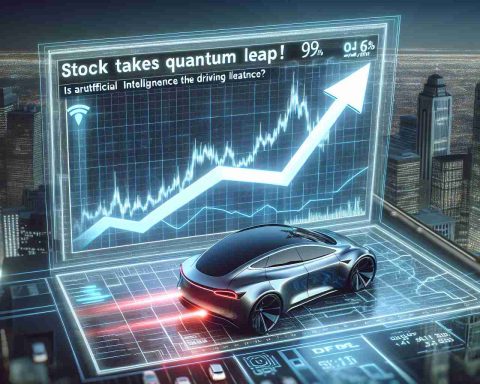The Next Generation of Automotive Technology
The latest advancements showcased at CES in Las Vegas promise to redefine our driving experiences. One standout is Sony’s Afeela, an electric vehicle poised to hit the market by mid-2026. This premium model, starting at a whopping $89,000, has finally revealed its specs and delivery roadmap.
In parallel, Honda unveiled its ambitious O-series line, featuring two innovative zero-emission vehicles: an elegant limousine and a versatile SUV. These cars are designed to prioritize cutting-edge infotainment, complete with wraparound screens that enhance the driving experience for both pilots and passengers.
Meanwhile, Xpeng is making headlines with its remarkable flying car, known as the Land Aircraft Carrier. This modular creation is set to revolutionize urban mobility and is expected to enter series production next year. With over 3,000 commitments already in place, it aims to be the world’s first widely produced flying car.
The design includes a carrier vehicle, which transports the flying module to its launch site. This groundbreaking system allows for vertical take-off, while the flying component seamlessly integrates back into the ground vehicle upon landing.
These innovations at CES demonstrate how the automotive landscape is evolving rapidly, paving the way for exciting new transportation possibilities in our near future.
Revolutionizing Urban Mobility: The Future of Automotive Technology
The automotive industry is on the brink of a transformative shift, fueled by cutting-edge innovations showcased at CES in Las Vegas. New technologies promise not only to redefine how we think about vehicles but also to enhance the overall driving experience. Below, we explore the latest advancements, their features, and their implications for the future of transportation.
Sony Afeela: A Premium Electric Vehicle
Sony’s venture into the automotive market has taken a significant leap with the announcement of the Afeela, a premium electric vehicle set to debut mid-2026. With a starting price of $89,000, the Afeela is positioned as a luxury model. This vehicle will feature advanced AI-driven systems aimed at enhancing driver assistance and in-car entertainment, providing a unique fusion of technology and mobility. Notable specifications include:
– Battery Capacity: Expected to offer over 300 miles of range on a single charge.
– Infotainment System: Integrates Sony’s entertainment technology, providing seamless access to music, movies, and gaming functionalities.
Honda O-Series: Elegant Zero-Emission Vehicles
Honda is stepping up its game with the O-series line, introducing two exciting zero-emission vehicles – a luxurious limousine and a versatile SUV. Designed with an emphasis on sustainability and driver comfort, these models feature:
– Advanced Infotainment: The vehicles boast wraparound screens that provide immersive experiences for both drivers and passengers.
– Sustainability Goals: Honda aims to achieve a significant reduction in carbon emissions throughout the vehicle’s lifecycle, positioning itself as a leader in eco-friendly automotive technologies.
Xpeng’s Flying Car: The Land Aircraft Carrier
Highlighting the future of transportation, Xpeng’s Land Aircraft Carrier is designed to revolutionize urban mobility. This innovative flying car features a unique modular design consisting of:
– Carrier Vehicle: Transports the flying module to designated launch sites.
– Vertical Take-off and Landing (VTOL): This allows for efficient urban air mobility and easy integration back into conventional road travel.
With over 3,000 pre-orders, Xpeng is on track to produce the first widely available flying car, marking a significant milestone in the evolution of personal transportation.
Key Trends and Future Insights
The advancements presented at CES not only reflect technological progress but also highlight crucial trends in the automotive industry:
# 1. Sustainability Focus
– Manufacturers are increasingly prioritizing eco-friendly designs and zero-emission technologies. This shift is essential for meeting regulatory requirements and addressing consumer demand for sustainable products.
# 2. Smart Vehicle Integration
– Vehicles are evolving into smart systems that integrate AI and IoT technologies. This integration enhances driving safety, offers personalized experiences, and supports connectivity with other devices.
# 3. Urban Air Mobility
– The emergence of flying cars like Xpeng’s is indicative of a broader movement towards urban air mobility solutions, aiming to alleviate traffic congestion and reduce travel times in urban centers.
Conclusion
As showcased at CES, the automotive industry is gearing up for a substantial transformation, driven by technological innovation and a commitment to sustainability. With premium electric vehicles, advanced infotainment systems, and the advent of air mobility, the future promises exciting changes that will redefine how we think about and interact with transportation. For further updates on automotive advancements, visit CES.














